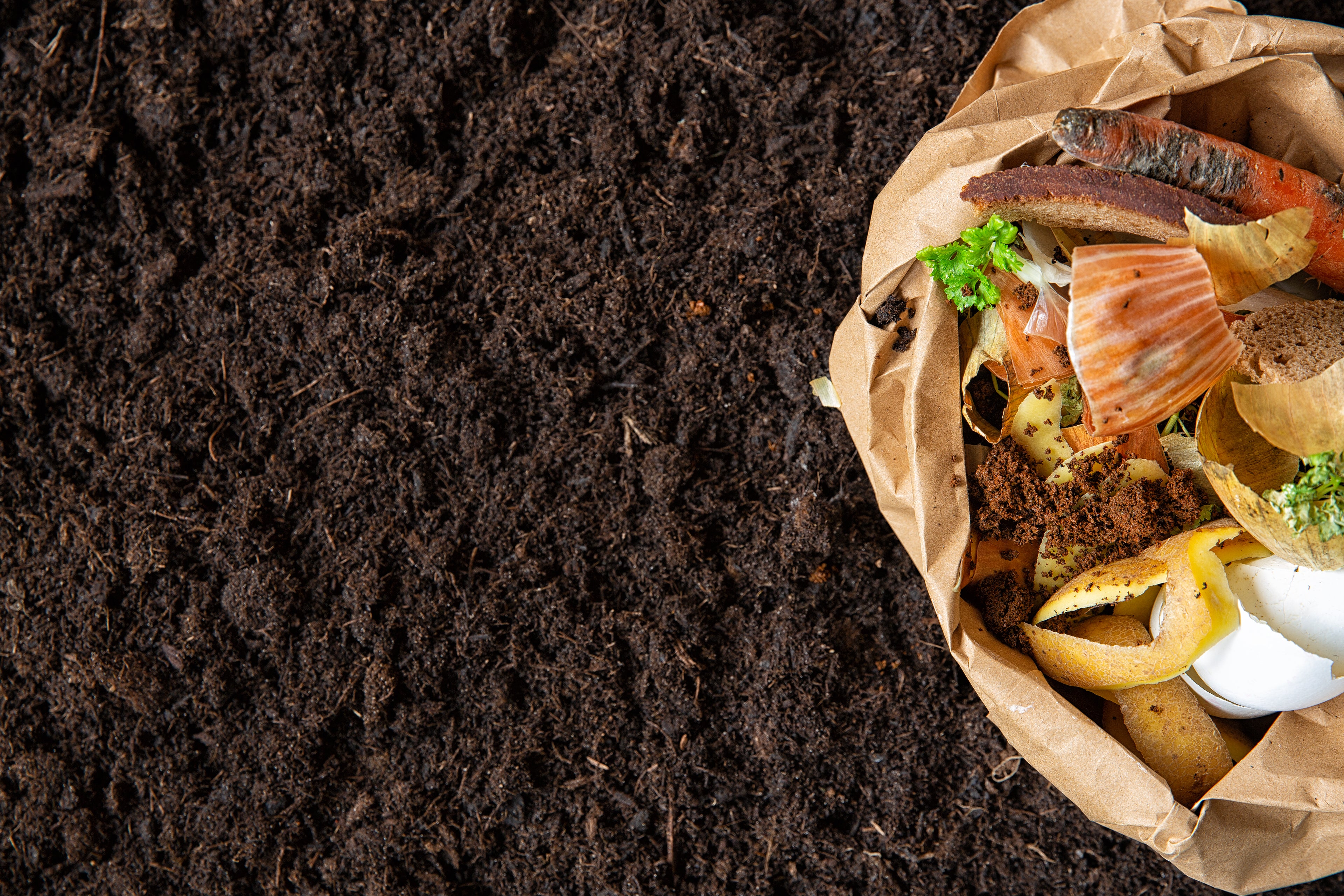What's The Difference Between Biodegradable and Compostable?

When we talk about products being eco-friendly we are referring to the effect it has on the environment at every stage of its life. This means that, in order to be considered eco-friendly, it must have minimal negative impacts on the planet when it is harvested, extracted, manufactured, distributed and used. But we must also consider the impact that it has at the end of its life by looking at how it can be disposed of.
There are several specific ways in which a product can be disposed of when it reaches the end of its life cycle - many are thrown in the bin, some are recycled and a few are even repurposed or donated.
But there are now an increasing number of products (or materials) on the market that are being labelled as 'biodegradable' or 'compostable' which means they can be disposed of in a way that doesn’t take from or harm the environment at all.
There are some clear similarities between the two for example, they are both features of eco-friendly materials and products, they both refer to a characteristic of a material that enables it to return to the earth safely and they both aim to curb consumer waste. However, people often make the mistake of using the terms 'biodegradable' and 'compostable' interchangeably when they actually mean two very different things.
What does biodegradable mean?
A biodegradable material is one that breaks down and decomposes into natural elements, such as carbon dioxide, water vapour and organic material, over time with the help of microorganisms.
Technically most things are biodegradable, even plastics, because everything eventually breaks down given some time. The problem is that some materials take hundreds of thousands of years to biodegrade and can even be harmful to the environment.
This is where it's easy for greenwashing to happen because a company can claim that their products or excessive packaging are made from biodegradable materials, as this is technically true; however, they are still damaging to the environment.
To be considered biodegradable from the eco-friendly perspective that we have come to understand this term to mean, the material must biodegrade quickly – within a year or less of disposal – and completely break down leaving nothing but natural elements behind. In short, the quicker it biodegrades, the greener it is.
If you want to identify a biodegradable material that is actually good for the environment then keep in mind that anything plant-based, animal-based or natural mineral-based will usually fall under this category; some examples include bamboo, cork, hemp and jute.
What does compostable mean?
A compostable material is one that can break down, under the right conditions, and be used as compost when it decays providing the earth with nutrients and, essentially, giving back to the environment. This process usually takes about 90 days and requires you to regularly water your waste and keep it at a particular temperature.
This means that it’s difficult to compost these materials at home so they will need to be sent to a compost facility.
All compostable items are technically biodegradable but not all biodegradable products are compostable. You could even consider composting a form of recycling as the material is being reused for something good.
Some examples of compostable materials include grass clippings, vegetable food scraps and cotton.
The difference between biodegradable and compostable
It's important to separate the two terms and understand why they cannot be used interchangeably so that we can ensure that we're disposing of materials and products responsibly and correctly.
One striking difference between biodegradable and compostable materials is the environment in which they break down. Compostable materials require specific conditions, or biological processes, to aid in its decomposition; whereas, biodegradable materials don't need any added elements other than being exposed to certain microorganisms.
Another key difference is that biodegradable materials break down into several natural elements whilst compostable materials leave behind a single organic matter called humus.
The key takeaway is that they are both complex terms that should not be taken at face value when presented to us by a brand or when seen labelled on a product. You should always look for certifications and other substantial evidence to support any claims that are being made by organisations who claim to use biodegradable or compostable materials.
For example, for a product to achieve BS. EN 13432 or BS EN14995 certification all the materials used in its production must be biodegradable.
Though it can be argued that there are issues with biodegradable and compostable materials in that compostable materials aren't easy to dispose of in the right way, and biodegradable materials that don't do further harm to the environment can be hard to identify, they should be considered positive factors that are pushing us into a more sustainable society and investing in these types of products is far better than the harmful alternatives.
Take a look at our new biodegradable straws, perfect for restaurants and picnics!







